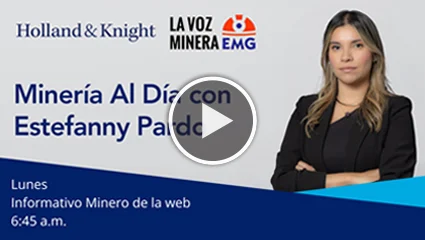Biden Administration's Focus on Offshore Wind Energy: DOI's Plan and Other Recent Developments
Highlights
- The U.S. Department of Interior (DOI) recently announced that the Biden Administration would be opening up the U.S. coastline to large-scale, offshore wind farming. Under the DOI plan, the agency's Bureau of Ocean Energy Management (BOEM) could sponsor up to seven offshore lease sales by 2025 in the Gulf of Maine, Gulf of Mexico, New York Bight, as well as off the coasts of the Mid-Atlantic states, Carolinas, California and Oregon.
- Although the DOI's recent announcement is a promising step toward catalyzing offshore wind development, BOEM and developers will confront distinct obstacles in attempting to construct wind turbines along the coastal United States. Even once projects are identified and approved, they will still face lengthy federal, state and local permitting reviews.
- This Holland & Knight alert provides an overview of considerations for developers and other stakeholders who have potential interest in taking advantage of the opportunities arising from the Biden Administration's recent announcement.
U.S. Department of the Interior (DOI) Secretary Deb Haaland announced in October that the Biden Administration would be opening up the U.S. coastline to large-scale, offshore wind farming. Speaking at a wind industry conference in Boston, Haaland described a plan under which her agency's Bureau of Ocean Energy Management (BOEM) would potentially sponsor up to seven offshore lease sales by 2025 in the Gulf of Maine, Gulf of Mexico, New York Bight, as well as off the coasts of the Mid-Atlantic states, Carolinas, California and Oregon.
The announcement followed the Biden Administration's earlier pledge to build 30 gigawatts (GW) of offshore wind energy by 2030, which is pivotal to the administration's plan to cut the nation's fossil fuel emissions 50 percent from 2005 levels by 2030. In line with this goal, on May 11, 2021, BOEM approved Vineyard Wind, the nation's first major commercial offshore wind farm, to be located off the coast of Martha's Vineyard in Massachusetts. In addition, in late November, DOI approved the construction and operations of the 132-megawatt (MW) South Fork Wind Project off the coast of Rhode Island and Long Island, New York. Earlier this year, DOI announced a proposed lease auction for offshore wind development on the Outer Continental Shelf in the New York Bight, the area of water between Long Island and the New Jersey coast. BOEM has also considered wind projects elsewhere, including off the coast of California.
Geographical Considerations
California
Although California's offshore wind planning processes have languished in comparison to some East Coast states (e.g., Massachusetts), that is quickly changing. BOEM's announcement dovetails with recent developments in California aimed at stimulating the deployment of offshore wind projects. For example, the State Legislature recently enacted a piece of milestone legislation (AB 525) that requires state agencies to develop offshore wind megawatt (MW) targets for 2030 and 2045. At the same time, BOEM is actively underway with the leasing process for two "Call Areas" off the California coast: 1) the Humboldt Call Area (North Coast) and 2) the Morro Bay Call Area (Central Coast). (For additional analysis, see Holland & Knight's previous alert, "California Legislature Passes Landmark Legislation to Bolster Offshore Wind Energy," Sept. 14, 2021.) Indeed, on Nov. 12, 2021, BOEM announced its designation of the Morro Bay Wind Energy Area, which triggers environmental review and related public comment under the National Environmental Policy Act (NEPA).
To realize the full fruition of the state and federal strategy, agencies and stakeholders must address a number of technological, infrastructure and regulatory questions specific to California. For example, offshore wind development in California is largely expected to be comprised of floating wind turbines, given that the vast majority of the West Coast Outer Continental Shelf (OCS) reaches depths greater than 60 meters – the limits of ocean floor-mounted foundations. Floating wind projects are not yet widely deployed in contrast to their ocean floor-mounted counterparts. However, at least two floating projects are in operation in Europe and are a harbinger of the technology's potential (the 30-MW Hywind project in Scotland and the 24-MW WindFloat Atlantic project in Portugal).
Assuming that the technological challenge is surmounted, neither the Humboldt or Morro Bay Call Areas are in immediate proximity to major population centers. The Humboldt Call Area has an estimated generation potential to power more than 1 million homes, yet Humboldt County as a whole has only approximately 60,000 homes. (See 2019 U.S. Census Bureau Data). Consideration must be given to the extent to which existing transmission and distribution infrastructure can transport electricity from these Call Areas to more densely populated areas, which for both areas are significant distances. The Humboldt Call Area is approximately 280 miles from the nearest major urban area (the San Francisco Bay Area), while Morro Bay is approximately 150 miles from the nearest urban area (Ventura County). It is similarly unclear whether the Call Areas have sufficient port resources to accommodate the ingress and egress of project components due to their nature as small, rural coastal communities.
Future California offshore wind projects will need to satisfy state-level environmental review requirements under the California Environmental Quality Act (CEQA), in addition to the federal NEPA review required of all offshore projects. Even projects located solely on the OCS are likely to have impacts in state and local jurisdictions (e.g., onshore infrastructure such as port upgrades, nautical and automatic transportation, transmission lines and power grid upgrades). CEQA requires lead agencies, including municipalities, to analyze, adopt and implement feasible mitigation measures to the extent practicable to avoid or reduce significant impacts. This requirement, which is a cornerstone of California environmental law, can add time and expense to project approval and implementation.
Texas and Gulf of Mexico
Texas has long embraced wind power. In 2005 and 2008, the Texas Legislature and Public Utility Commission of Texas created Competitive Renewable Energy Zones (CREZ) in order to facilitate the development of wind resources in resource-rich areas such as the panhandle and west Texas, and then transmit that energy to areas of high energy demand such as cities in central and east Texas. After Winter Storm Uri hit the state in February 2021, however, renewable resources – including wind resources – have come under scrutiny due to their intermittent operating characteristics. Moreover, offshore wind has different operating characteristics than inland CREZ wind resources and would be located in a warmer climate zone, thus providing potential reliability benefits compared to CREZ wind resources.
In terms of the Gulf of Mexico more broadly, the DOI and BOEM in 2020 published two studies showing that the Gulf is an attractive location for offshore wind development. (See Holland & Knight's previous alert, "Studies Find Gulf of Mexico Has Untapped Potential for Offshore Wind Development," May 21, 2020.) The studies found that more than 500 GW of potential offshore wind development may be possible in the Gulf, with such developments becoming economically competitive in the market without subsidies by 2030. The studies identified several geographic areas of interest, which will likely inform the areas selected for leases in this most recent effort.
Pursuant to this, on Oct. 28, 2021, DOI announced that it would publish a "Call for Information and Nominations" to further assess commercial interest in wind energy leasing in an area within the Gulf of Mexico consisting of 30 million acres just west of the Mississippi River to the Texas/Mexican border. The Call was published in the Federal Register on Nov. 1, triggering a 45-day comment period that will end on Dec. 16, 2021. Afterward, BOEM will conduct an environmental review and solicit public feedback. According to the agency's published timeline, any lease sales arising from the Call are expected to occur approximately one year later.
The Road Forward
DOI's recent announcement is a promising step toward catalyzing offshore wind development. Despite this important action, however, a number of substantial challenges will remain for developers seeking to construct offshore wind projects on the OCS. On Nov. 19, 2021, Vineyard Wind LLC announced that it had commenced construction of the Vineyard Wind 1 Project off the coast of Massachusetts). In order to reach that point, the project developer had to successfully achieve the following milestones:
- $2.3 billion senior secured debt financing from a syndicate of nine banks
- contracts for supply and installation of approximately 130 miles of 66-kilovolt inter-array cables
- a contract with a major U.S.-based company for 62 wind turbines, each producing 13 MW
- contracts for a foreign heavy lift installation vessel, as well as federal Jones Act-compliant feeder vessels, for on-site installation out of New Bedford Harbor
- the recent announcement of partnership with another company to develop a new, deep water offshore wind marine terminal, presumably for use with a not-yet-constructed Jones Act-compliant turbine installation vessel (TIV).
These highlights demonstrate that the scope of financing and contracting activities needed to roll out a first-utility scale project for offshore wind development are extensive, but with sufficient planning and resources, they can be resolved. Successfully expanding leasing and development will require a concerted effort be made by regulatory agencies, developers, states and relevant stakeholders in order for projects to be developed on the scale needed to meet ambitious and important renewable energy goals.
Holland & Knight Can Help
Holland & Knight's Energy Team has extensive experience assisting developers in successfully navigating the regulatory and commercial challenges required to construct offshore wind projects, as well as in taking advantage of the renewable energy opportunities that have been announced by the Biden Administration.
Information contained in this alert is for the general education and knowledge of our readers. It is not designed to be, and should not be used as, the sole source of information when analyzing and resolving a legal problem, and it should not be substituted for legal advice, which relies on a specific factual analysis. Moreover, the laws of each jurisdiction are different and are constantly changing. This information is not intended to create, and receipt of it does not constitute, an attorney-client relationship. If you have specific questions regarding a particular fact situation, we urge you to consult the authors of this publication, your Holland & Knight representative or other competent legal counsel.
Related Insights


